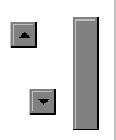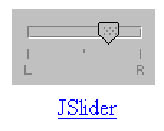Independent elements:
Model
|
|
View
|
|
Controller
|
|
|
Model:
View:
Controller:
|
Java's version of MVC:
|
||
|
Most components provide the model-defined API directly in the component class. The component can be manipulated without interacting with the model at all.//example of method in JSlider classpublic int getValue() {return getModel().getValue(); } //so we can use the following and avoid the model
|



